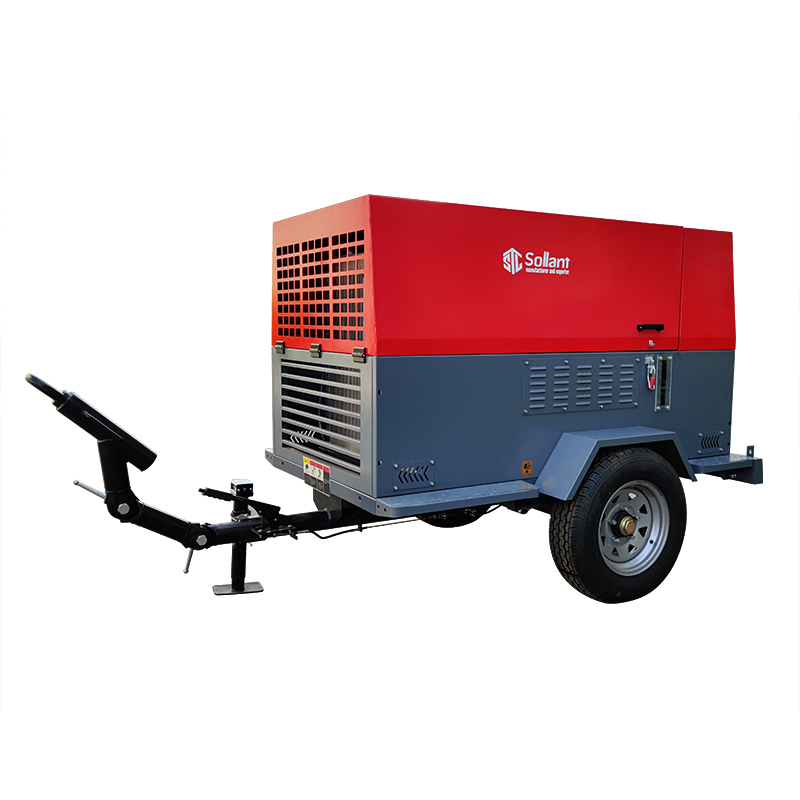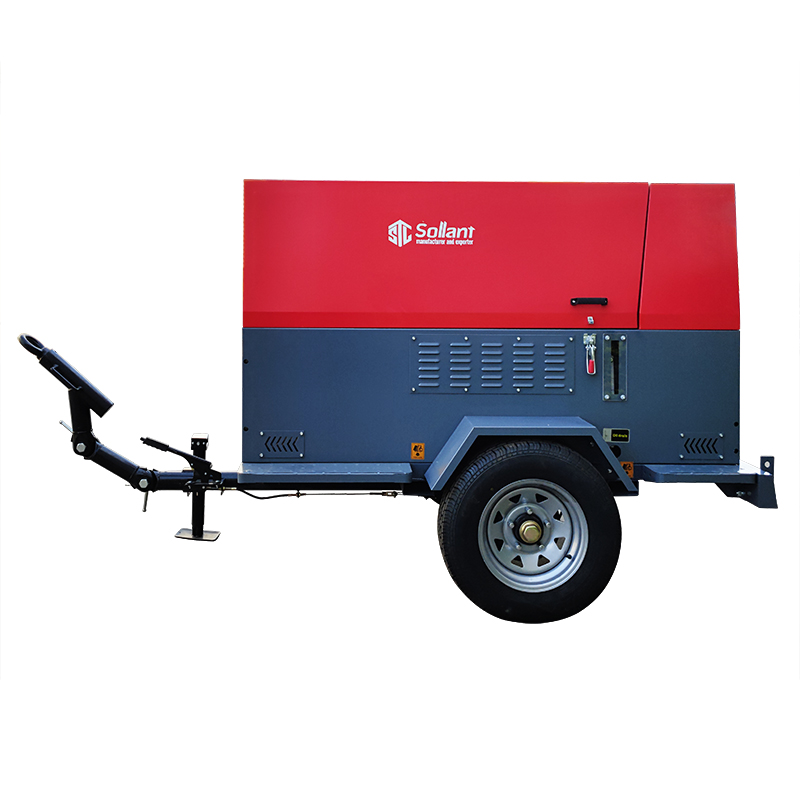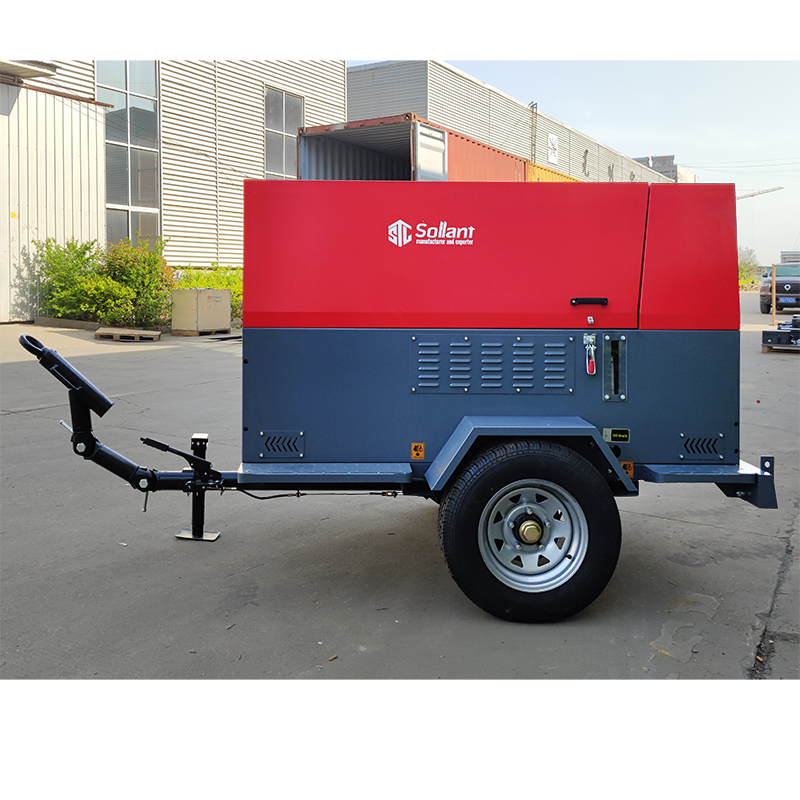How to Properly Use a 39 kW Diesel Portable Air Compressor

A 39 kW diesel portable air compressor is a powerful and reliable machine designed to provide compressed air for various industrial tasks. Whether you’re working on construction sites, in remote locations, or in industries requiring heavy-duty equipment, knowing how to properly use this compressor is essential for ensuring efficiency, safety, and longevity. In this article, we will guide you through the correct usage of a 39 kW diesel portable air compressor and offer tips to enhance performance.
1. Pre-Operation Inspection
Before starting the air compressor, it’s crucial to carry out a thorough inspection to ensure everything is in proper working order. This helps prevent potential issues and ensures a safe working environment.
- Check fuel levels: Ensure the diesel tank has enough fuel for the task at hand. Using high-quality diesel will improve performance and reduce wear on the engine.
- Inspect oil levels: Check both engine oil and compressor oil levels to prevent damage caused by friction and overheating. If necessary, top off with the recommended type of oil.
- Examine air filters: A clogged air filter can reduce airflow and affect performance. Clean or replace filters as needed.
- Inspect hoses and connections: Ensure all hoses and connections are tightly secured and free of leaks to maintain optimal air pressure.
2. Starting the Compressor
Starting a diesel-powered air compressor involves more steps compared to electric ones, but it’s relatively straightforward when done correctly.
- Turn on the fuel supply: Make sure the fuel valve is open to allow diesel to reach the engine.
- Set the pressure regulator: Adjust the pressure regulator to the required level based on the specific needs of your job.
- Engage the start button or switch: Diesel compressors typically have a manual or electric start button. Follow the manufacturer’s instructions for a smooth startup.
- Warm-up time: Allow the engine to warm up for a few minutes before putting the compressor into full operation. This helps stabilize the machine and ensures optimal performance.
3. Adjusting Pressure Settings
The 39 kW diesel air compressor is capable of handling various pressure requirements. Adjusting the pressure correctly is key to efficient operation and preventing equipment damage.
- Identify the correct pressure level: Check the user manual or the specific requirements for the task. Different pneumatic tools or machinery require different levels of air pressure.
- Monitor pressure gauge: Always keep an eye on the pressure gauge during operation. If the pressure exceeds safe limits, shut down the compressor and check for issues.
4. Safe Operating Practices
To ensure both the machine and the operators remain safe, there are several best practices to follow during use.
- Avoid overloading the compressor: Do not exceed the air output capacity of the machine, as it can lead to overheating or mechanical failure.
- Use in a well-ventilated area: Diesel engines produce exhaust fumes, so always operate the compressor in an area with good ventilation.
- Maintain a safe distance: Keep the compressor away from flammable materials and heat sources to prevent accidents.
- Shut down safely: When you’re done, gradually release air pressure before shutting off the machine to prevent damage or injury.
5. Routine Maintenance
To keep your 39 kW diesel portable air compressor running smoothly, it’s important to perform regular maintenance.
- Change oil regularly: Follow the manufacturer’s recommendations for oil changes to maintain engine and compressor efficiency.
- Clean the cooling system: The cooling system helps prevent the machine from overheating, so ensure it’s free from dust and debris.
- Replace filters and gaskets: Regularly check and replace air filters, fuel filters, and gaskets to avoid wear and tear.
- Inspect for wear: Look for signs of wear on belts, hoses, and other components. Replace parts as necessary to avoid downtime.
6. Troubleshooting Common Issues
Despite regular maintenance, problems can still arise. Here’s how to troubleshoot some common issues:
- Low pressure output: Check for air leaks in hoses or fittings. Also, inspect the air filter and compressor oil levels.
- Engine won’t start: Ensure the fuel valve is open, and the battery has enough charge. Check for any fuel or oil leaks.
- Overheating: Inspect the cooling system for blockages. Low oil levels can also cause the engine to overheat.
Conclusion
A 39 kW diesel portable air compressor is a powerful tool that can handle demanding tasks, but it’s essential to use it correctly to get the most out of it. By performing regular pre-operation checks, adjusting pressure settings, following safe operating procedures, and maintaining the machine, you can ensure efficient and long-lasting performance. Proper care and operation of the compressor will not only extend its lifespan but also improve the productivity of your projects.
Invest time in understanding the machine’s workings and ensure all operators are trained to handle it safely. This will maximize the performance and reliability of your 39 kW diesel air compressor.
Diesel Air Compressor: A High-Efficiency, Versatile Compressed Air Solution





